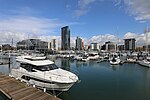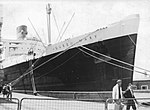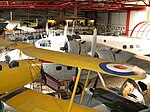Hythe Pier, Railway and Ferry

Hythe Pier, the Hythe Pier Railway and the Hythe Ferry provide a link between the English port city of Southampton and the Hampshire village of Hythe on the west side of Southampton Water. It is used both by commuters and tourists, and forms an important link in the Solent Way and E9 European coastal paths. The ferry is the only one remaining of the various ferries that once linked Southampton with points around Southampton Water.The pier, railway and ferry service are currently operated by Blue Funnel Ferries of Southampton. In October 2016 the previous owners (White Horse Ferries) warned their staff of potential redundancy which suggested an uncertain future from the pier and ferry service. After months of talks Lee Rayment of Blue Funnel completed negotiations to acquire the Pier, Train and Ferry with operations starting on 21 April 2017.The railway is the oldest continuously operating public pier train in the world.The ferry was due to stop operating from the end of 2022 but services continued in the hope that a new owner could be found.
Excerpt from the Wikipedia article Hythe Pier, Railway and Ferry (License: CC BY-SA 3.0, Authors, Images).Hythe Pier, Railway and Ferry
The Promenade, New Forest Langdown
Geographical coordinates (GPS) Address Nearby Places Show on map
Geographical coordinates (GPS)
| Latitude | Longitude |
|---|---|
| N 50.8746 ° | E -1.3935 ° |
Address
Hythe Pier
The Promenade
SO45 6RU New Forest, Langdown
England, United Kingdom
Open on Google Maps









